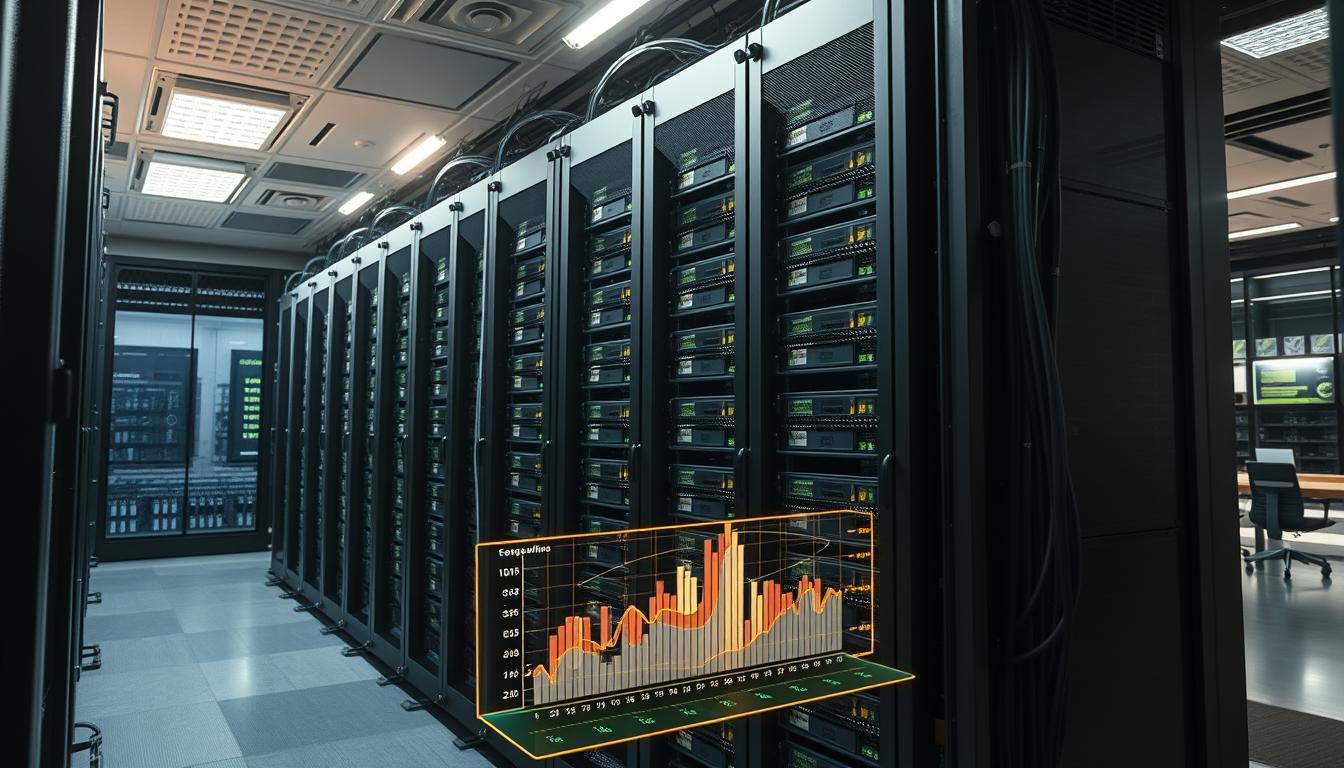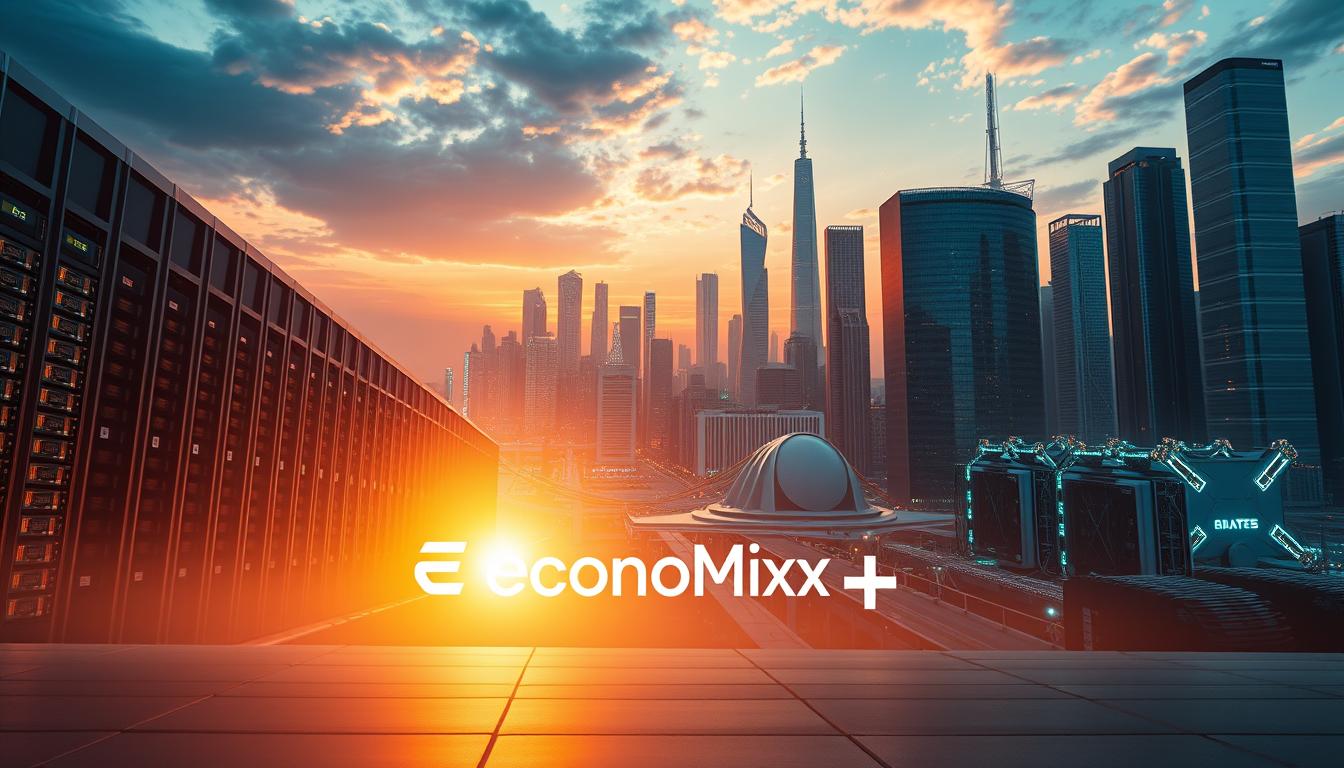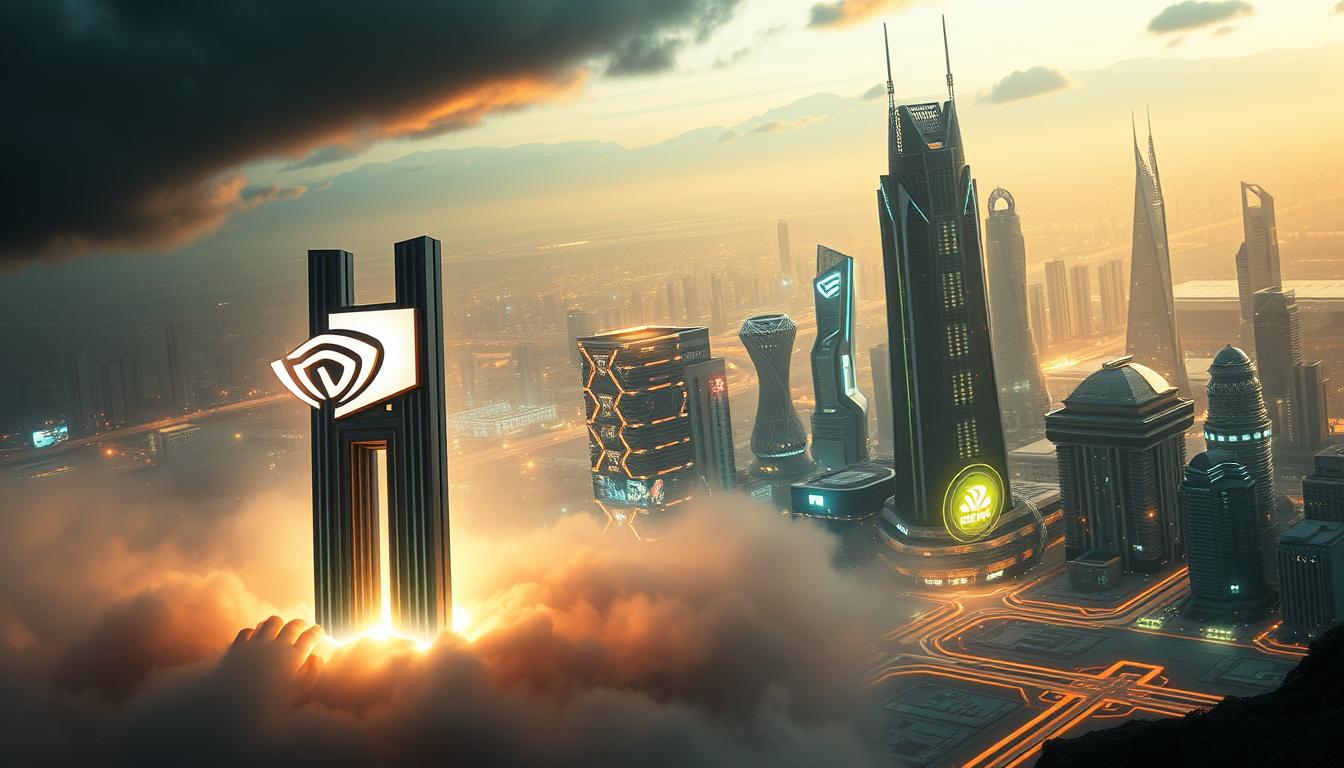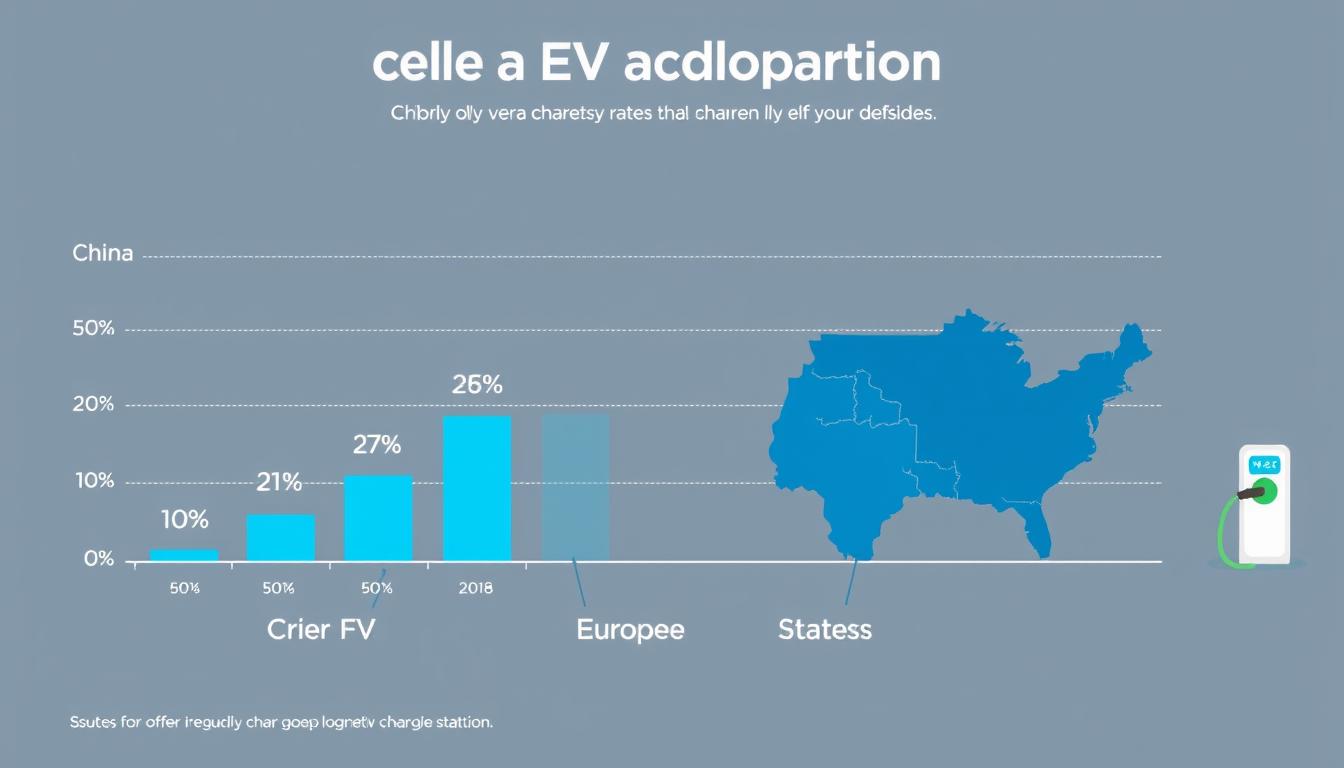What if the future of technology isn’t just about faster processors but about transforming entire industries? Nvidia, a leader in GPU technology, is proving this vision is closer than ever. With its cutting-edge innovations, the company is reshaping how we think about gaming and artificial intelligence.
CEO Jensen Huang recently described data centers as “AI factories,” producing valuable products and tokens that drive advancements in machine learning and automation.
This bold vision highlights Nvidia’s dual dominance in gaming GPUs and AI infrastructure development, making it a key investment for businesses looking to thrive in this transformative time.
One of the company’s latest breakthroughs, NVLink Fusion, delivers an astonishing 1.8 TB/s per GPU—14 times faster than PCIe Gen5. This technology is a critical enabler for hybrid chip architectures, paving the way for more efficient and powerful systems.
Nvidia’s stock performance also reflects its growing influence. Since April 2024, its shares have surged by 60%, reaching $135.35. This growth underscores the market’s confidence in the company’s ability to lead in both gaming and artificial intelligence.
Key Takeaways
- Nvidia is transforming data centers into AI factories, driving innovation in artificial intelligence.
- NVLink Fusion delivers 1.8 TB/s per GPU, enabling hybrid chip architectures.
- The company’s stock has grown by 60% since April 2024, reflecting strong market confidence.
- Nvidia’s advancements are reshaping industries, from gaming to automation.
- Jensen Huang’s vision highlights the potential of AI to revolutionize technology.
Nvidia’s Evolution: From Gaming to AI Powerhouse
From its humble beginnings in a diner to becoming a global tech giant, Nvidia has redefined innovation. The company started in 1993 with a focus on 3D graphics and has since transformed into a leader in artificial intelligence and computing.
The Rise of Nvidia in the Gaming Industry
Nvidia made its mark in the gaming industry with the release of the GeForce 256 in 1999. This groundbreaking product was the world’s first GPU, revolutionizing programmable graphics and setting a new standard for gaming experiences that captivated people and transformed the way we think about computer graphics in business and entertainment over time.
Over the years, the company continued to innovate, partnering with Microsoft to develop the GPU for the original Xbox in 2000. This collaboration solidified Nvidia’s position as a key player in the gaming world.
Transitioning to AI: A Strategic Shift
In 2006, Nvidia introduced the CUDA toolkit, a pivotal moment in its journey. Initially designed for parallel computing, CUDA became the foundation for AI acceleration. It took nearly a decade for the tech industry to fully embrace its potential in artificial intelligence.
This strategic shift allowed Nvidia to expand beyond gaming and into AI infrastructure, positioning itself as a leader in both fields.
Key Milestones in Nvidia’s Journey
Nvidia’s transformation from a gaming GPU specialist to an AI infrastructure leader is marked by several key milestones:
- Launch of the GeForce 256, the first GPU, in 1999.
- Development of the CUDA toolkit in 2006, enabling AI acceleration.
- Strategic partnerships with Microsoft and TSMC for manufacturing.
- Survival through market shifts, including the crypto boom and bust cycles.
Today, Nvidia is a dominant force in both gaming and artificial intelligence, shaping the future of technology.
Revolutionizing Gaming with Advanced GPU Technology
Advanced graphics processing units are redefining what’s possible in modern games. With innovations in rendering and power efficiency, GPUs are setting new benchmarks for visual fidelity and performance.
This section explores how the latest technologies are transforming the gaming landscape.
GeForce RTX Series: Redefining Graphics
The GeForce RTX series has become a cornerstone of modern gaming and computer technology. These GPUs leverage AI-enhanced rendering to deliver stunning visuals, showcasing the latest chips in the industry.
For instance, the RTX 5090 boasts 32GB of memory, making it a powerhouse for high-resolution games and complex models.
One standout feature is DLSS 3.0, which uses neural networks to generate frames. This technology significantly boosts performance without compromising on quality. Gamers can now enjoy smoother gameplay even in the most demanding titles.
Ray Tracing and AI-Driven Graphics
Ray tracing has revolutionized how light is simulated in games. Combined with generative AI, it creates lifelike environments that were previously unimaginable. This blend of technologies enhances immersion, making games feel more realistic than ever.
However, the adoption of these advanced features hasn’t been without challenges. The 40-series GPUs, for example, faced backlash due to their high pricing, leading to a 46% drop in gaming revenue in 2023, which has raised concerns within the business surrounding the production of these chips.
Impact on Gaming Experience and Industry Growth
The advancements in GPU technology extend beyond gaming. The Omniverse platform, powered by these GPUs, is used in over 700 industrial simulations. From car design to logistics, its applications are vast and transformative.
Energy efficiency is another area of focus. The Blackwell architecture promises significant improvements, reducing power consumption while maintaining high performance.
This is crucial for both gamers and industries relying on GPU processing.
“The future of gaming lies in the seamless integration of AI and advanced graphics technologies.”
In summary, the latest GPUs are not just enhancing games—they’re reshaping entire industries. With innovations like ray tracing, AI-driven rendering, and energy-efficient architectures, the possibilities are endless.
Nvidia’s Role in the AI Revolution
Artificial intelligence is reshaping industries, and Nvidia is at the forefront of this transformation. By developing cutting-edge technologies, the company is enabling advancements in data centers, computing systems, and AI applications across the world. This section explores how Nvidia is driving the AI revolution.

AI Infrastructure: Data Centers as AI Factories
Nvidia’s vision of data centers as AI factories is revolutionizing the industry. These centers are designed to process vast amounts of data, enabling faster and more efficient AI training. The company’s hybrid architecture integrates third-party systems, creating a seamless platform for innovation.
One standout product is the DGX Spark workstation. Priced at $3,999, it supports 128GB of memory and can handle up to 200 billion parameters. This makes it an ideal solution for enterprise-grade AI development.
NVLink Fusion: Enhancing AI Capabilities
NVLink Fusion is a game-changer in AI computing. With a speed of 1.8 TB/s per GPU, it outperforms traditional PCIe Gen5 by 14 times. This technology enables hybrid chip architectures, making AI systems more powerful and efficient.
Its applications extend beyond data centers, impacting industries like healthcare and robotics. For example, medical imaging analysis has seen a 400% speed increase in trials, accelerating drug discovery and patient care.
AI Applications Across Industries
Nvidia’s AI solutions are transforming various sectors. In healthcare, its platform is accelerating drug discovery and improving diagnostic accuracy. The Omniverse platform, used by over 700 clients including Mercedes and Amazon, is driving innovation in industrial simulations.
In the Middle East, sovereign AI infrastructure projects under the Trump accords are leveraging Nvidia’s technology. These partnerships are paving the way for AI-driven advancements in the region.
“The future of AI lies in its ability to solve real-world problems, and Nvidia is making this possible.”
From robotics training using synthetic data to energy-efficient computing, Nvidia’s AI applications are reshaping the world. Its commitment to innovation ensures it remains a leader in the industry.
Strategic Partnerships and Future Innovations
The future of technology is being shaped by strategic alliances and groundbreaking innovations. By collaborating with industry leaders and investing in advanced technologies, companies are driving the next wave of technological evolution.

Collaborations with Tech Giants and Automotive Leaders
Partnerships with tech giants and automotive leaders are accelerating progress in key areas. For example, the collaboration with Toyota focuses on enhancing autonomous driving safety.
These alliances are not only improving existing models but also paving the way for new advancements.
Another notable partnership is with CoreWeave, providing access to the H100 GPU. This enables businesses to leverage high-performance computing for complex tasks, from data analysis to AI training.
Expanding AI Ecosystem: Partnerships and Investments
Investments in the AI ecosystem are fostering innovation across industries. A $1 billion startup fund targets robotics and healthcare, supporting cutting-edge projects. Additionally, the Neocloud GPU rental network now includes Lambda and Crusoe, expanding access to powerful computing resources.
The Constellation HQ expansion in Taiwan’s science park highlights the commitment to advancing quantum computing and other emerging technologies. These efforts are creating a robust platform for future growth.
Upcoming Technologies: Blackwell GPU and AI Cloud Platform
The Blackwell GPU, featuring 208 billion transistors and a 5nm process, represents a leap forward in computing power. Its transformer engine architecture is designed to handle complex AI models efficiently.
The AI cloud platform offers local processing advantages, reducing latency and improving performance. This technology is set to transform how businesses approach data-intensive tasks, from simulations to real-time analytics.
“Innovation thrives when industry leaders join forces to push boundaries.”
In summary, strategic partnerships and upcoming technologies are shaping the future of business. From autonomous driving to AI-driven platforms, these advancements are unlocking new possibilities and driving innovation across industries.
Conclusion: Nvidia’s Vision for the Future
The world stands on the brink of a technological revolution, driven by innovation and artificial intelligence. Nvidia’s advancements are not just shaping industries but also addressing global challenges. From the metaverse to robotics, the company’s technologies are unlocking new possibilities.
Workforce transformation is another critical area. With a predicted 30-50 million global worker shortage by 2030, AI copilots are becoming essential. Nvidia engineers already rely on AI coding assistants, showcasing the potential of these tools to enhance productivity.
Humanoid robotics represents a $50 billion market opportunity, particularly in manufacturing and logistics. Nvidia’s Blackwell GPU is poised to accelerate enterprise AI adoption, offering sustainable solutions for energy-intensive computing.
As the future unfolds, Nvidia’s vision continues to inspire. By blending gaming and AI, the company is creating a world where technology solves real-world problems, paving the way for a smarter, more connected planet.
FAQ
▶
▶
▶
▶
▶
▶
▶
▶













